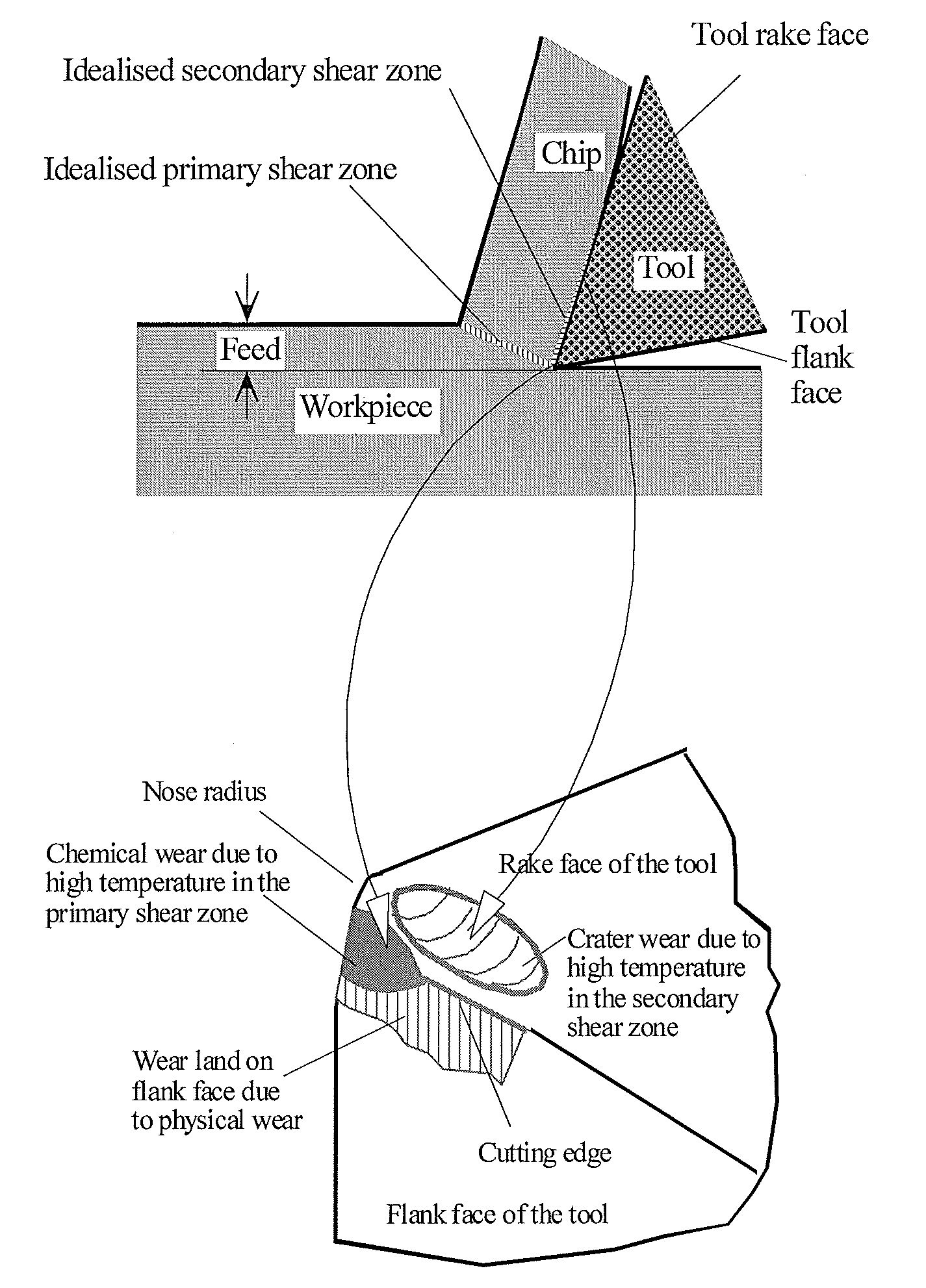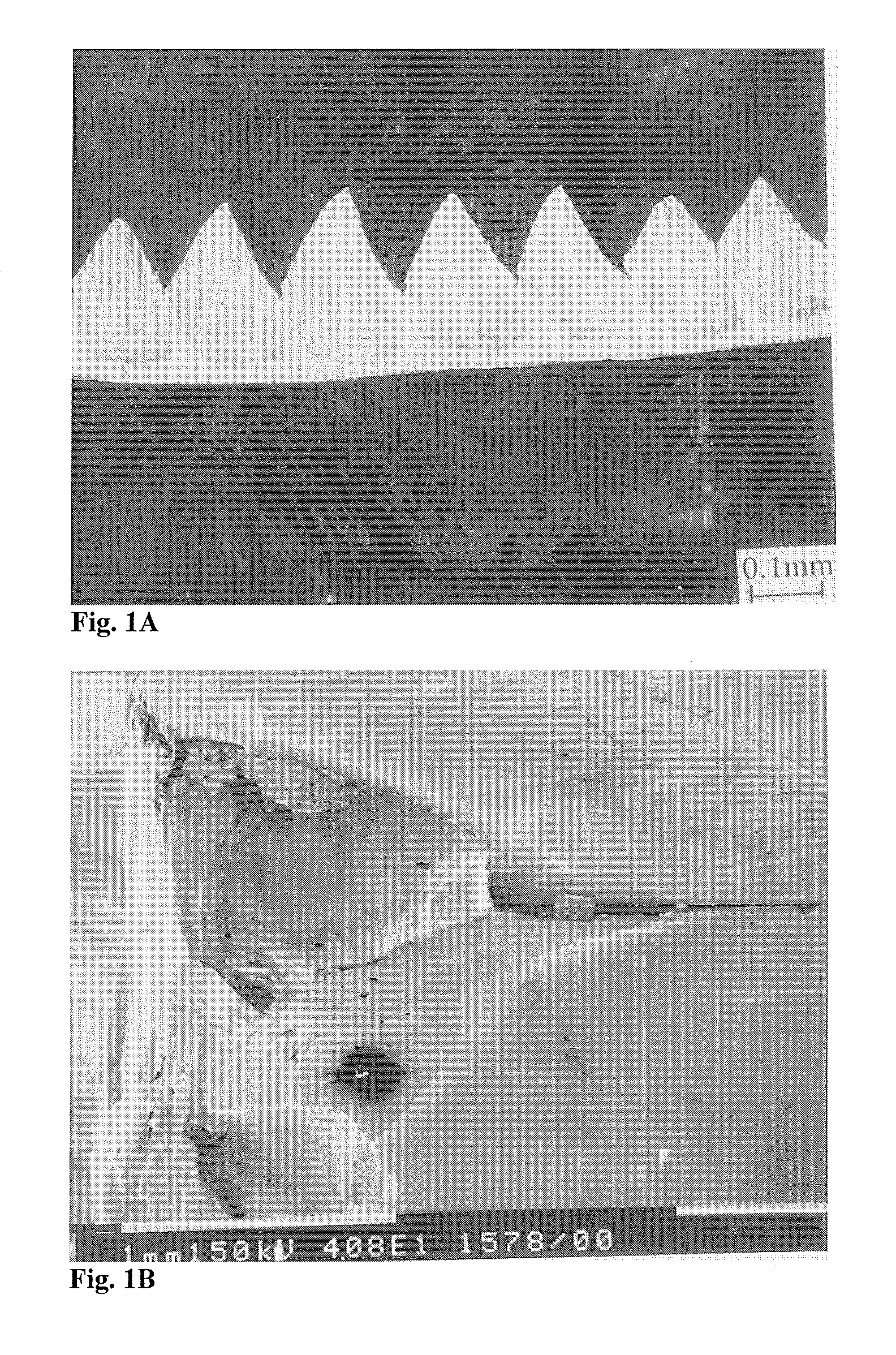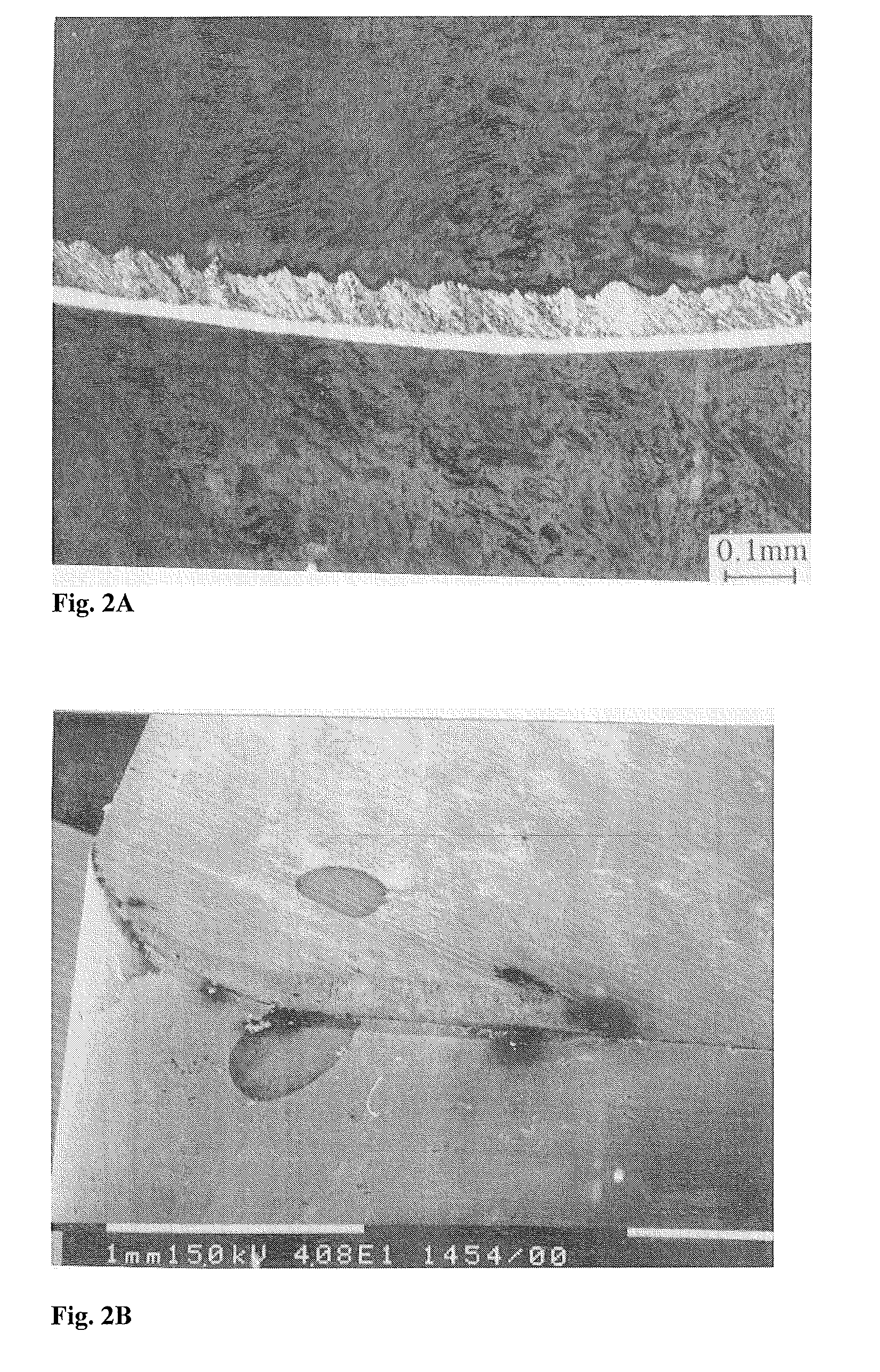Processes for improving tool life and surface finish in high speed machining
a high-speed machining and tool life technology, applied in boring/drilling equipment, turning equipment, milling equipment, etc., to achieve the effect of suppressing shear localization or chip segmentation, reducing tool-chip contact length sufficiently, and preventing accelerated chemical wear
- Summary
- Abstract
- Description
- Claims
- Application Information
AI Technical Summary
Benefits of technology
Problems solved by technology
Method used
Image
Examples
Embodiment Construction
[0046]FIG. 1a is an optical micrograph of a shear localized chip obtained from cutting Fe-18.9% Ni-0.1% C alloy in the hardened (martensitic) condition at a cutting speed of 1148 feet (350 m) per minute and a large feed rate of 0.012″(0.305 mm) per revolution. The microstructure exhibits features characteristic of inhomogeneous deformation caused by shear localization in the primary shear zone, as characterized by a transformation band. The transformation band is made up of nanocrystalline grains, which are beyond the resolution of an optical microscope, and scatter the incident white light and hence appear white under optical illumination. The white layer extends from the free surface to the cutting edge of the tool. The nanocrystalline grains in the white layer are associated with a large volume fraction of grain boundary, which is a high diffusivity path. Nanocrystalline grain boundary diffusion is the mechanism causing accelerated chemical wear, localized at the cutting edge of ...
PUM
| Property | Measurement | Unit |
|---|---|---|
| vibrational frequency | aaaaa | aaaaa |
| volume fraction | aaaaa | aaaaa |
| grain size | aaaaa | aaaaa |
Abstract
Description
Claims
Application Information
 Login to View More
Login to View More - R&D
- Intellectual Property
- Life Sciences
- Materials
- Tech Scout
- Unparalleled Data Quality
- Higher Quality Content
- 60% Fewer Hallucinations
Browse by: Latest US Patents, China's latest patents, Technical Efficacy Thesaurus, Application Domain, Technology Topic, Popular Technical Reports.
© 2025 PatSnap. All rights reserved.Legal|Privacy policy|Modern Slavery Act Transparency Statement|Sitemap|About US| Contact US: help@patsnap.com



